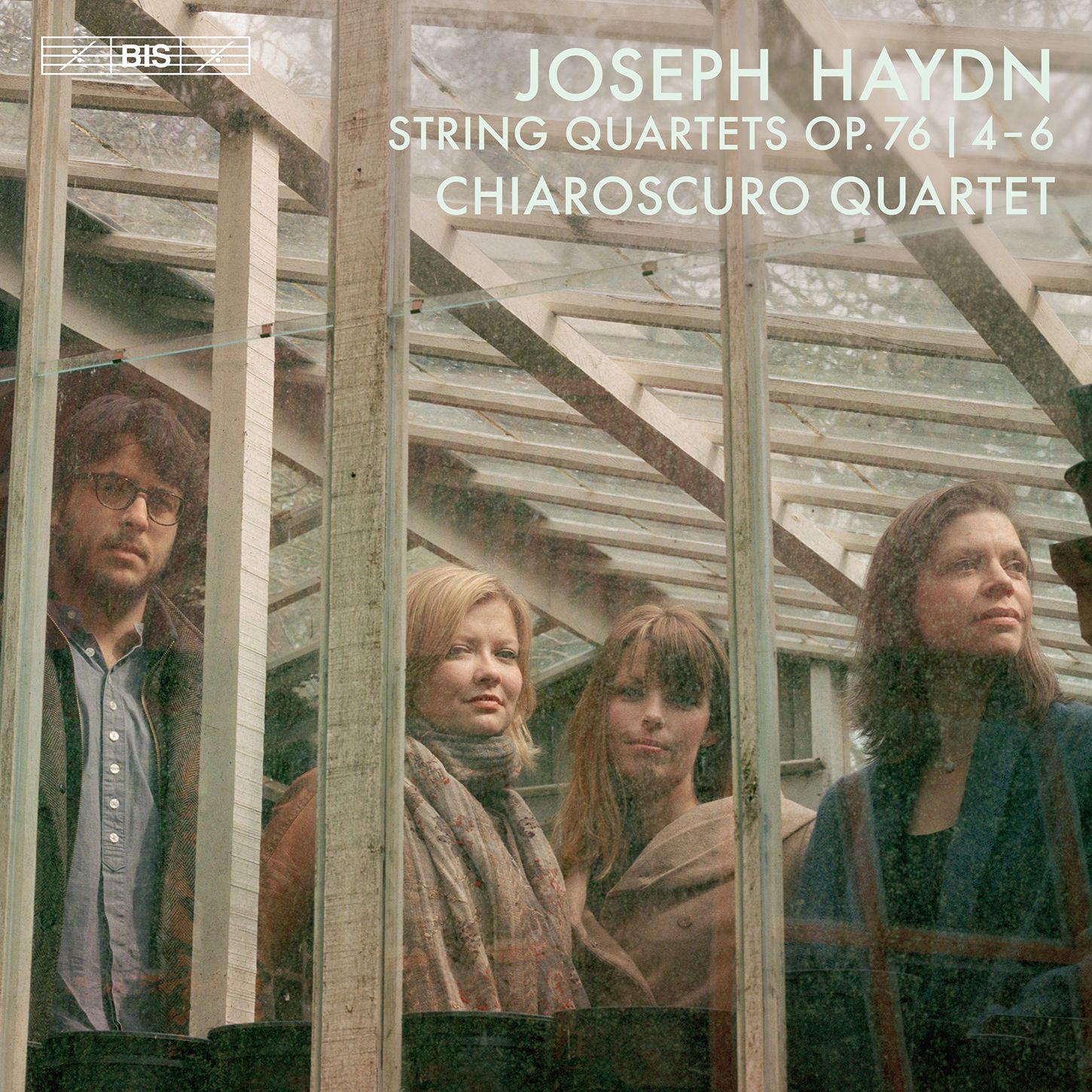More sheer joy: the Chiaroscuro Quartet completes Haydn's Op. 76
This disc glows with life!

Back in late August last year, Classical Explorer presented the Chiaroscuro Quartet's performances of the first three quartets of Haydn's Op. 76. It makes sense to cover the complementary disc of Quartets Nos. 4-6, released in early March this year. The Op. 76 set is sometimes referred to as "Erdődy" after the Hungarian Count to whom they are dedicated.
The String Quartet in B flat major, Op. 76/4 is one of Haydn's quartets with a nickname: "Sunrise," because of the way the first violin's initial theme (the "Sunrise" motif) rises over a sustained tonic chord (at around 3"33 you can hear how Haydn inverts it on repetition so the cello has the theme while the remaining three players sustain a chord). As Haydn scholar Richard Wigmore memorably says in his booklet notes, this was "a nickname waiting to happen". This static plateau acts in contrast to the semiquaver (sixteenth-note, for US readers) activity:
The depth and profundity of the slow movement, compressed miraculously into a mere four and a half minutes, is extraordinary. The structural sensitivity shown by the Chiaroscuro Quartet in the first movement is revealed again here, its sonata-cum-passacaglia aspect unfolding with astonishing inevitability:
The Chiaroscuro Quartet, to coin a phrase, "gets stuck in" to the bucolic Balkan drones of the Trio of the Minuet, perfectly honouring Haydn's exquisite sense of proportion. And as for that fantastic finale, it exudes such sophistication. Wigmore's notes point out the connections to Beethoven's late quartets as Haydn fragments the theme between the four instruments (think the "alla danza tedesca" of Beethoven's Op. 130 Quartet, also in B flat; I've included a rather interesting animated illuminated "score" video of the latter in a performance by the Alexander String Quartet. The fragmentation of the theme occurs towards the end of the movement in the Beethoven, and the graphics reflect the changes of texture):
Again, in the String Quartet in D, Op. 76/5, it is the slow movement that provides the work's fulcrum. Cast in F sharp major (!), that music positively glows:
Worth hearing the Menuet for Claire Thirion's scurrying cello alone!:
Finally, rounding off Haydn's last complete set of Quartets is the String Quartet in E flat, Op. 76/6. It begins with a set of variations, marked Allegretto:
Perceptively, Richard Wigmore suggests that the theme is related to the finale of Beethoven's Op. 74 Quartet, the so-called "Harp" Quartet. I'll let you decide, in the safe hands of the Emerson Quartet:
The Janus-headed slow movement features counterpoint that owes much to Bach but presages late Beethoven; but let's close out with the antics of the finale, as Wigmore puts it "a movement without a tune worth the name"; and yet one which revels in the sense of play, a sense of adventure captured to perfection by the Chiaroscuso Quartet:
The quadrinational Chiaroscuro Quartet (Alina Inragimova, Russia; Pablo Hernán Benedí, Spain; Emilie Hörnlund, Sweden; Claire Thirion, France) is one of the finest chamber groups in front of the public today. Performed on original instruments, this disc glows with life.
